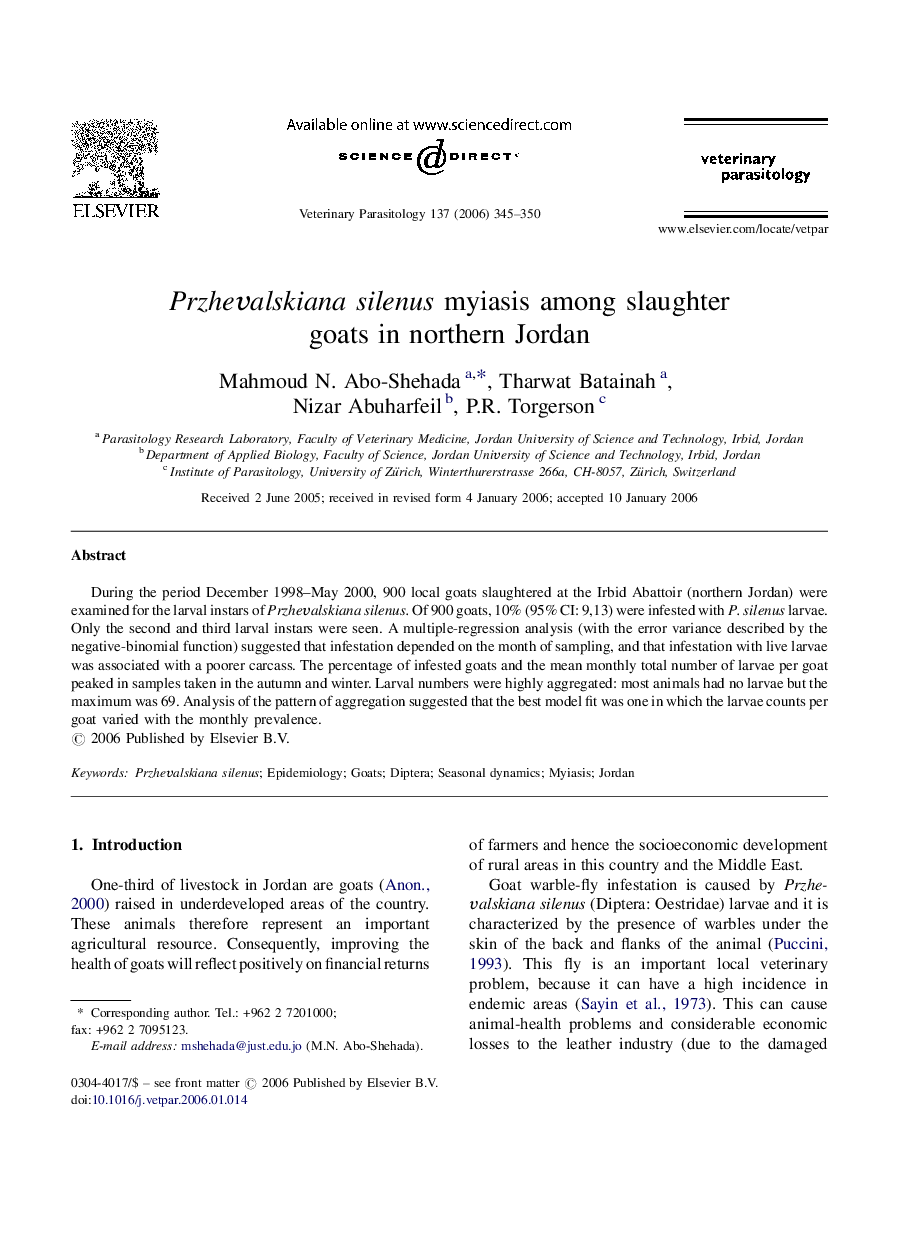| Article ID | Journal | Published Year | Pages | File Type |
|---|---|---|---|---|
| 2472525 | Veterinary Parasitology | 2006 | 6 Pages |
Abstract
During the period December 1998-May 2000, 900 local goats slaughtered at the Irbid Abattoir (northern Jordan) were examined for the larval instars of Przhevalskiana silenus. Of 900 goats, 10% (95% CI: 9,13) were infested with P. silenus larvae. Only the second and third larval instars were seen. A multiple-regression analysis (with the error variance described by the negative-binomial function) suggested that infestation depended on the month of sampling, and that infestation with live larvae was associated with a poorer carcass. The percentage of infested goats and the mean monthly total number of larvae per goat peaked in samples taken in the autumn and winter. Larval numbers were highly aggregated: most animals had no larvae but the maximum was 69. Analysis of the pattern of aggregation suggested that the best model fit was one in which the larvae counts per goat varied with the monthly prevalence.
Related Topics
Life Sciences
Agricultural and Biological Sciences
Animal Science and Zoology
Authors
Mahmoud N. Abo-Shehada, Tharwat Batainah, Nizar Abuharfeil, P.R. Torgerson,
